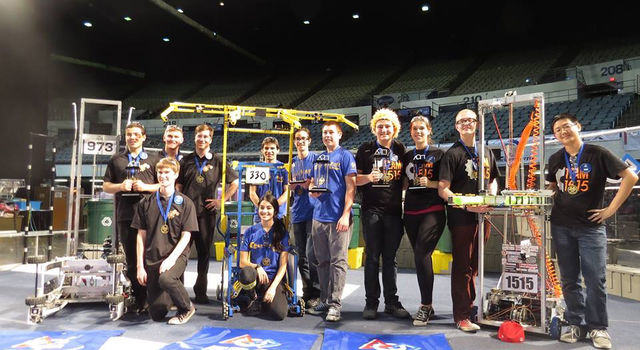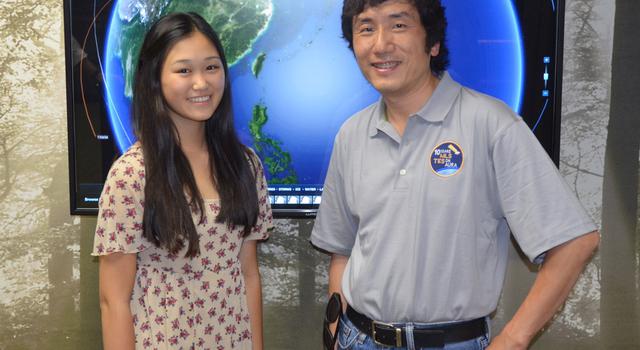Meet JPL Interns| July 29, 2014
Passion for Learning
Not many interns get the opportunity to study one of humanity's biggest questions: How did life emerge? But mechanical engineering major Jessica Nuñez is having the experience of a lifetime in search of the answer. Nuñez is interning this summer in the Planetary Sciences Section at NASA's Jet Propulsion Laboratory in Pasadena, California.
As part of a NASA Astrobiology Institute project led by Isik Kanik, Nuñez constructs and analyzes simulated hydrothermal vents, chimney-like structures that are hypothesized to have been the birthing grounds for the emergence of life. On a daily basis, she examines the chimneys, which she constructs herself through a chemical process, and analyzes them with one of her favorite tools on lab: an electron microscope. "It gets the coolest pictures," she said. "It's awesome to be exposed to technology here at JPL that I wouldn't be exposed to anywhere else." Nuñez observes the chimney's composition to see how its structure changes over periods of time. Along with her cohorts, she is hoping to see a chemical reaction similar to the one that scientists believe produced life on Earth.
Working closely with her mentors, Mike Russell and Laurie Barge, Nuñez is eager to lend a helping hand in research that could answer such an important question. "There are a bunch of different pieces to this big puzzle to see how life could have surfaced," she said.
While Nuñez's ultimate career goal is to work in the engineering field, she is excited about the new challenges and experiences an internship in planetary sciences might offer. "It was kind of intimidating at first, but at the same time I was excited about all the possibilities JPL has and all there is to learn," she said. "I would like to get exposed to as much as possible, so it's exciting for me to get my foot in the door here and see what work I can do in the future."
This fall, the 22-year-old West Covina native is bidding adieu to Citrus Community College in order to sail into new terrains at the University of California, Berkeley. Nuñez believes she will have an edge as she enters a new academic chapter. "In a sense, I think this internship is preparing me to transfer, because I am learning something new every day, so it's nice," she said.
Whether she is taking a run in the neighboring mountains, or investigating the deeply webbed quest of life's emergence, Nuñez is thoroughly enjoying her internship experience. And like many scientists and engineers who venture to JPL, she is already planning for her future endeavors. "I would love to continue working here, maybe even in different areas within JPL or other NASA laboratories," she said.
In the near future, she hopes to participate in developing missions to visit Europa and Enceladus, the icy moons of Jupiter and Saturn, widely regarded as the next frontiers in the search for life beyond Earth.
Says Nuñez, "I've never been into space or exposed to it, but now that I have, I love it."
TAGS: Women in STEM, Mechanical Engineering, Astrobiology, Internships & Fellowships, Citrus Community College, University of California, Berkeley, Hispanic Heritage Month, Women at NASA










